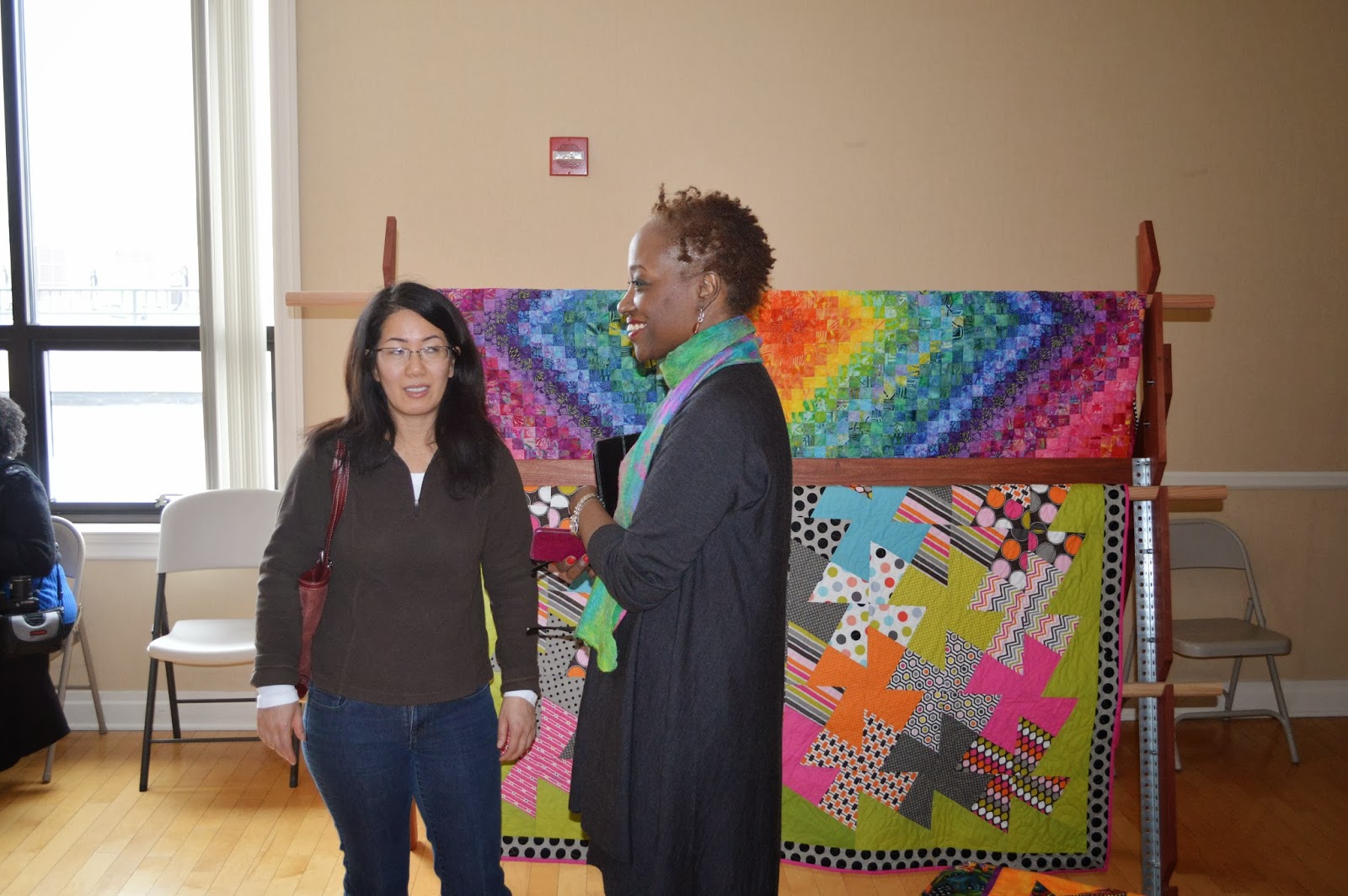Below are some of the steps in the process + finished results.
 |
| 1- merino wool fiber added not top of a yellow-orange silk (see it peeking through) |
 |
| 2- adding embellishments on top of merino wool fiber |
 |
| 4-finished scarf |
 |
| 1- merino wool fiber added not top of a yellow-orange silk (see it peeking through) |
 |
| 2- adding embellishments on top of merino wool fiber |
 |
| 4-finished scarf |
| Subscriber comments: The Color Wheel.. to make your own: Go to any hardware store or store that sells paint and you can usually get free 'color swatch cards'. These can be used over and over, mixed and matched...endless possibilities. To make your color wheel, take your color swatch cards and with a standard hole puncher, punch a hole in the top middle of each card. Thread a piece of yarn or string through all cards and tie a knot in the ends, and you have your own color wheel! You can make a warm wheel, a cool wheel, a crazy wheel.. use your imagination! Wanda |
 |
| IPAD case-closed with button closure |
 |
| IPAD Case-open |
 |
| IPAD Case-open |
 |
| IPAD Case -outer |
 |
| LDJ Jewelry |
 |
| LDJ Jewelry |
 |
| Josie's quilt -Ginger In The Sky shows my dog in one photo surrounded by brightly colored 3D stars |
.JPG) |
| Cell phone/tablet cases |
 |
| Kindle tablet, Mini IPAD cases, MUG rug (hold your cup tea/bagel -coaster) |
 |
| Looking Through The Window by popular vote was one of the favorite quilts |
 |
| Josie's chunky wool snood/cowl-oh how warm |
 |
| Wall quilts in various sizes/knitted scarf on a friend |
 |
| another popular item of the day -Josie's nuno felted scarves |
 |
| Josie explaining the Nuno felt process to friends |
 |
| Josie talking about her quilts |
 |
| Felted IPAD cases with inside quilting |
Follow my blog with Bloglovin I've spent the last 2 days tinkering around with my blog and my website trying to figure some things out...
